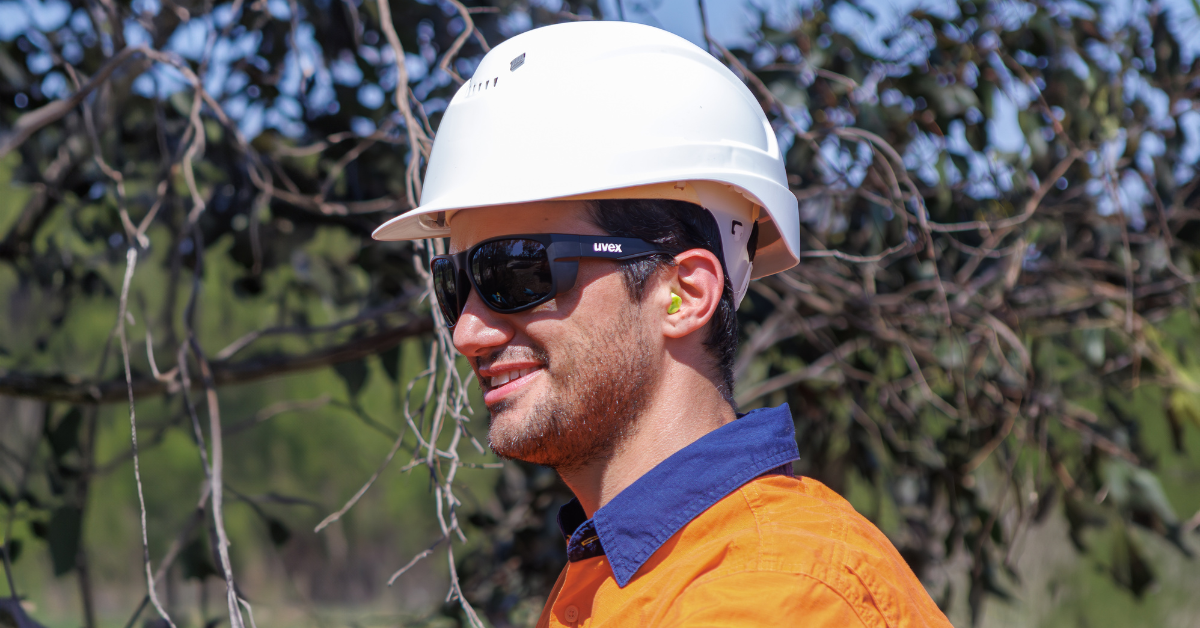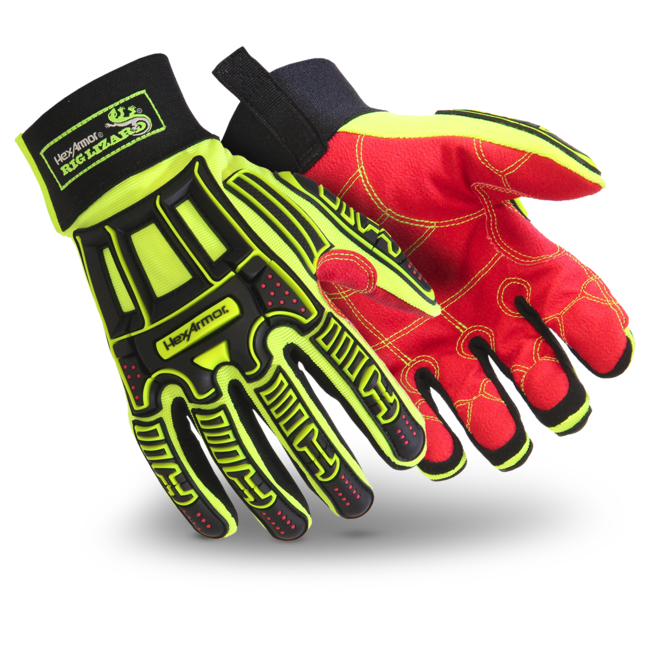The cost of workplace hearing loss – and how to prevent It
The statistics on workplace hearing damage make for grim reading. Hearing Australia’s Principal Audiologist, Karen Hirschausen says “more than 1.1...
As digitalisation advances, touch-sensitive displays are becoming more and more common in the workplace. As a result, there is a growing demand for protective work gloves with touchscreen capability. But what is behind the technology, what do the safety gloves need to be able to do and how do I know which gloves are suitable?
Industry 4.0 is playing an increasingly important role in everyday working life. We can see this in the touchscreens prevalent in the workplace, in the touch input options available on machines and in the personal and company smartphones used by employees. They enable employees to access a wealth of digital information on a single device at any time. Often just as intuitively as on a smartphone.
Industrial touch controls and displays are also dust and water-resistant because they do not involve mechanical parts. Digitalisation saves paper, while the connected IT landscape documents information immediately and makes it accessible at any time.
Various types of technology are used for touchscreens: One option is optical systems that, in actual fact, do not detect the touch but rather the presence of the finger near the display surface – for example, if a grid of IR light barriers is broken or the movement is detected by a camera.
Resistive displays are based on two thin conductive layers that are insulated from each other. When touched, these two layers are pressed together, which causes a measurable interruption to the insulation. In principle, both technologies work independently of the input device: Finger. Glove. Stylus. Anything can be used to navigate the screen.
The most common type of technology used is capacitive technology, as it is affordable, robust and well integrated in the established display production process. This technology also enables multiple simultaneous inputs to be reliably detected, including finger gestures. It works by generating an alternating electrical field between two thin conductive layers. The capacity of this field changes when e.g. a finger comes close because some of the charge is transferred. Like with resistive displays, the accuracy and number of potential simultaneous inputs is influenced by how the layers are structured and arranged. The disadvantage of capacitive displays, however, is that a transfer of charge is necessary. This
means that electrically insulating materials, such as those that most gloves are made from, do not generally work well, or at all.
 As a result, employees have to remove their safety gloves each time they want to use a touchscreen and then put them back on again afterwards. This is annoying and wastes time, but more importantly it increases the risk of contamination and injuries because employees are not protected by the gloves while using the touchscreen.
As a result, employees have to remove their safety gloves each time they want to use a touchscreen and then put them back on again afterwards. This is annoying and wastes time, but more importantly it increases the risk of contamination and injuries because employees are not protected by the gloves while using the touchscreen.
As touchscreens are also becoming more common in workplaces where personal protective equipment (PPE) has to be worn, there is a demand for safety gloves that not only protect the employee and/or the product, but are also touch capable.
There is another aspect to consider, as the use of assemblies and components that respond sensitively to electrostatic discharge (ESD) is increasing. Parts that would previously only be found in microelectronics and IT assembly are now standard components in household appliances and lighting, as well as mechanical and plant engineering. Even conventional assembly gloves therefore need to be able to reliably prevent electrostatic discharge.
Application areas where static charge needs to be dissipated to prevent a fire or explosion are even more critical.
It is not surprising that there is a whole host of standards, professional association regulations and company test specifications for this reason. Only some of these refer specifically to safety gloves, though. The DIN EN 1149 and DIN EN 16350 standards were originally created for the purpose of explosion protection and define protective clothing and gloves with a discharge capability that is adequate for preventing the formation of ignitable discharges. However, only DIN EN 16350 applies explicitly to safety gloves.
Employees’ equipment and the working environment are required to have sufficient conductivity so as to enable a closed earthing chain. This means that the charge has to be not only distributed, but discharged. DIN EN 1149-5 defines limit values for the half-life period and shielding factor of electrostatic charge, as well as the surface resistance of dissipative protective clothing. DIN EN 16350, meanwhile, stipulates a maximum contact resistance of < 108Ω, assuming that the safety gloves are worn on the skin and earthing takes place via the wearer.
With DIN EN ISO 21420, which has become valid in 2020, the pictogram known from DIN EN 1149 will identify protective gloves that have been tested for the necessary dissipative properties.

The DIN EN 61340 series of standards, which is designed to provide product protection, also does not apply specifically to safety gloves. The series describes a comprehensive concept intended to create conditions in which ESD-sensitive components can be handled safely. This applies not just to PPE, but also to floors and electrical installations, for example.
 There is not yet a specific standard for touch functionality. However, it is useful to know that safety gloves that are tested in accordance with one or more of the above standards are practically touch capable: The limit values are generally adequate to enable touch-sensitive devices to be used with reliability.
There is not yet a specific standard for touch functionality. However, it is useful to know that safety gloves that are tested in accordance with one or more of the above standards are practically touch capable: The limit values are generally adequate to enable touch-sensitive devices to be used with reliability.
The requirements that arise for safety gloves are similar for both ESD and touch functionality. To influence the alternating field in capacitive displays described earlier, the safety glove must – exactly the same as for ESD – have a certain electrical conductivity. Human skin has this electrical conductivity, so it may be sufficient simply for the safety glove to be thin enough. Gloves without a stockinette therefore work better than coated knitted gloves. The materials used are also a factor: Fabrics that absorb moisture, like cotton or bamboo, are more conductive than synthetic fabrics such as polyester.
Black coatings are often coloured using carbon black, which is conductive and enhances the material’s touch capability. Foamed coatings, on the other hand, tend to have an insulating effect on account of the air bubbles they contain.
The devices used also play a role: The structure of the layers in the screen, the electronic control and the software-side calibration of different capacitive displays all influence the touch function. As a result, you may find that a glove works on a smartphone but that the system control does not respond immediately.
The touch requirements for PPE overlap with those for ESD product protection and explosion protection in many areas. Since there is no standardised test process for the touch capability of safety gloves, manufacturers are making do with the existing standards and familiar symbols in order to provide users with guidance. This means that safety gloves
that are tested accordingly go beyond the requirements of the standard and also offer the desired touch functionality.
However, users should be aware that touch functionality alone, as is sometimes advertised by the symbols or marketing terms used by some PPE manufacturers, does not necessarily mean that the safety gloves are suitable for ESD or for use in explosion protection areas. For these requirements, it is important to continue to check the manufacturer’s information
regarding certification in accordance with the relevant standard. If safety gloves comply with the DIN EN 16350 antistatic standard, it can be assumed that they cover touch functionality, ESD product protection and explosion protection.

Request an industrial trial of the uvex phynomic airLite ESD range today!

Author:
Dr. Matthias Bartusch
Product Development/Coating Technology
UVEX SAFETY Gloves GmbH & Co. KG

The statistics on workplace hearing damage make for grim reading. Hearing Australia’s Principal Audiologist, Karen Hirschausen says “more than 1.1...

Safety glasses are a critical part of personal protective equipment (PPE) on worksites Australia-wide. But the trend towards stylish safety glasses...

A guide to ISEA 138 impact standards Following the inclusion of a performance standard for back of hand impact protection in the revised...